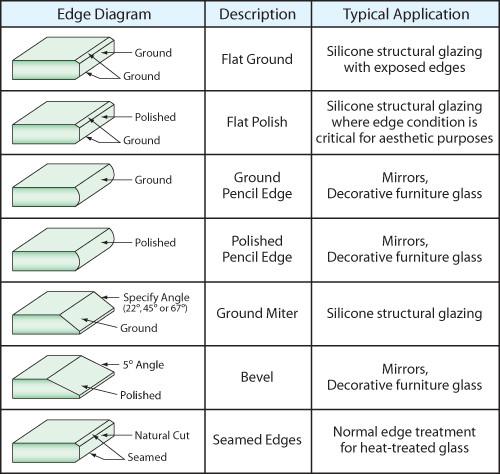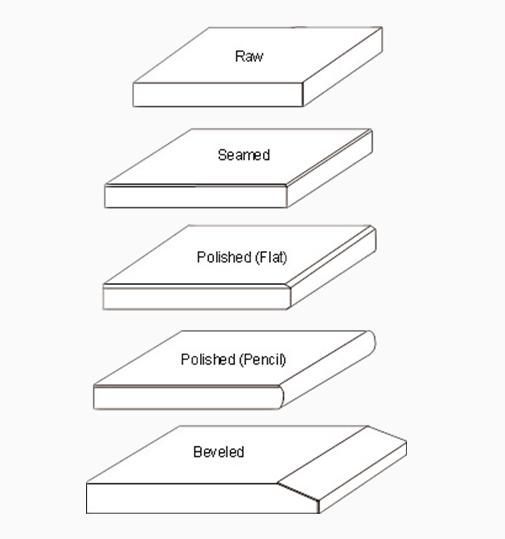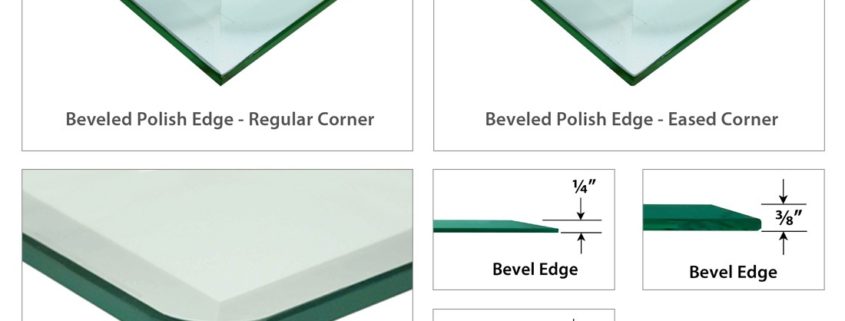GLASS EDGE TYPES
Building GLASS EDGE TYPES
The condition of the edge of finished glass products can impact the long-term structural performance of the glass system. The adjacent table of edge types is provided to help design professionals understand typical applications
- Seamed Edge:
- Application: Typically used for interior applications where the edges are not exposed, such as in glass shelving or tabletops within a frame.
- Flat Polished Edge:
- Application: Suitable for visible edges, offering a smooth and glossy finish. Commonly used in glass tabletops, countertops, and glass shelves.
- Pencil Polished Edge:
- Application: Provides a slightly rounded edge, enhancing safety and aesthetics. Often used in glass furniture, such as tables and cabinets.
- Beveled Edge:
- Application: Offers an angled edge, creating a decorative and elegant look. Often used in mirrors, tabletops, and door panels for aesthetic enhancement.
- Miter Edge:
- Application: Created by cutting and polishing the edges at an angle, usually at 45 degrees. Commonly used in glass panels and mirrors to create seamless joints.
- Ground Edge:
- Application: Achieved by grinding the edge to a specific finish. Typically used in architectural glass and some industrial applications where a polished finish is not necessary.
- Chamfered Edge:
- Application: Involves cutting and finishing the edge at a beveled angle. Often used in glass partitions, shelves, and certain decorative applications.
Each of these edge types serves specific functional and aesthetic purposes, and the choice of edge type should be carefully considered based on the intended application and design requirements. Additionally, the proper handling and installation of glass with the appropriate edge type are crucial to ensure the long-term structural performance and safety of the glass system.






